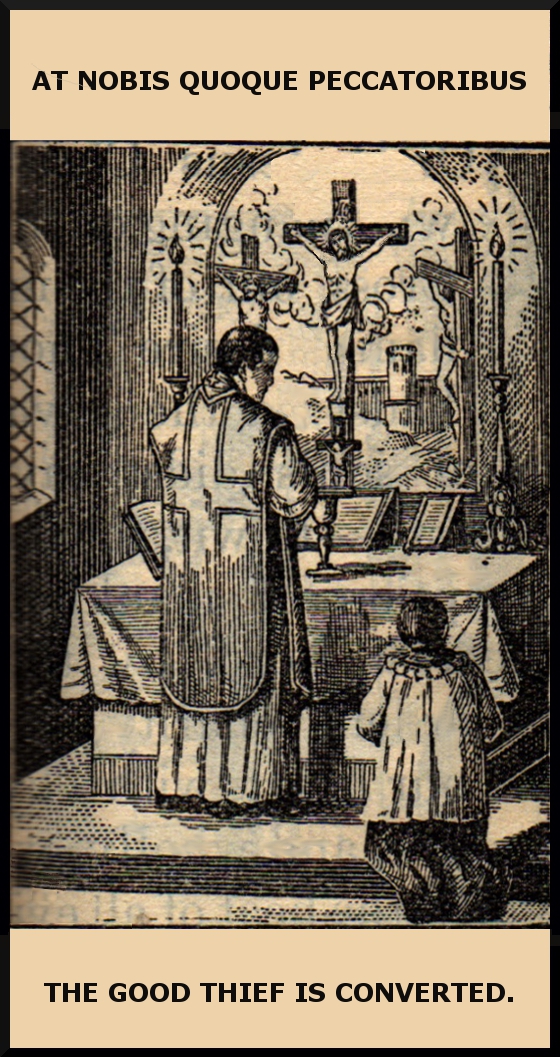 “For I know my iniquity, and my sin is always before me.” – Ps. 51:3
“For I know my iniquity, and my sin is always before me.” – Ps. 51:3
After finishing the memento for the dead, the priest starts the “Nobis quoque peccatoribus” – “to us also, thy sinful servants.” He does so in a slightly elevated voice while striking his breast in a penitential gesture acknowledging his own sinfulness. As our officiating representative before God, he also pleads for the rest of the faithful. We should at this point make our own those same penitential sentiments as did the good thief when confessing his guilt, so that upon death we, too, may hear those words from our Lord: “Hodie mecum eris in Paradiso.”
The prayers of the “Nobis quoque” continue by naming 15 of the early Church’s martyrs who died a violent death rather than deny our Lord. We pray that through the Mercy of God we might persevere and be included amongst those admitted into the heavenly kingdom as His children, adopted and born-again through the Holy Ghost as were “These…who are come out of great tribulation, and have washed their robes, and have made them white in the blood of the Lamb.”
Prayer: “Lord Jesus Christ, who didst so mercifully promise heaven to the thief that humbly confessed his injustice; behold me, I beseech Thee, with the same eyes of mercy, that, now confessing my crimes, I may obtain pardon, and in the end of my life be strengthened with hope to be with Thee in heaven. Amen.”
+++
In the N.O. not only are the prayers shortened, but the priest does not strike the breast at the “nobis quoque peccatoribus”, and unlike in the TLM, the humble acknowledgement of us being sinners is completely omitted. As Ghir writes in reference to the text of the TLM: “We acknowledge and confess ourselves in all humility to be but poor sinners, for we thereby draw on ourselves God’s favor and mercy.” Furthermore, naming all 15 martyrs is optional in the N.O. The priest may opt for naming only the first 4 if he so desires. Gone, too, are the 8 signs of the cross as made by the priest in the TLM for this part of the Mass.



